An Examination of the Distribution of White-Collar Worker Residences in Tokyo and Osaka during the Modernizing Period
Abstract
1. Introduction
2. Data and Methods
3. Results
3.1. Distributions of the Salaried Workers in 1925
3.2. Distributions of Company Employees and Executives based on Telephone Directories in the mid-1930s
3.3. Relationship Between Residences of the Company Employees and Executives and Distance from the City Center
4. Discussion
5. Conclusions
- As long as comparative statistical data were used, there was a tendency for many white-collar workers in clerical and technical positions to reside in certain sectors in both Tokyo and Osaka in 1925.
- In Tokyo and Osaka in the mid-1930s, the white-collar workers in private companies tended to live more in the urban fringes and suburbs with relatively low population density. Compared to Osaka, Tokyo was relatively suburbanized with white-collar workers in private companies.
Funding
Acknowledgments
Conflicts of Interest
References
- Gregory, I.N.; Healey, R.G. Historical GIS: Structuring, mapping and analysing geographies of the past. Prog. Hum Geog. 2007, 31, 638–653. [Google Scholar] [CrossRef]
- Gregory, I.N.; Geddes, A. (Eds.) Toward Spatial Humanities: Historical GIS and Spatial History; Indiana University Press: Bloomington, Indiana, 2014. [Google Scholar]
- McMaster, R.B.; Lindberg, M. The National Historical Geographic Information System (NHGIS). In Proceedings of the 21st International Cartographic Conference, Durban, South Africa, 10–16 August 2003; Volume 2003, pp. 821–828. [Google Scholar]
- Southall, H.; Přidal, P. Old Maps Online: Enabling global access to historical mapping. E-Perimetron 2012, 7, 73–81. [Google Scholar]
- Burgess, E.W. Residential Segregation in American Cities. Ann. Am. Acad. Pol. Soc. Sci. 1928, 140, 105–115. [Google Scholar] [CrossRef]
- Beveridge, A.A. Immigration, Ethnicity, and Race in Metropolitan New York, 1900–2000. In Past Time, Past Place: GIS for History; Knowles, A.K., Ed.; ESRI Press: Redlands, CA, USA, 2002; pp. 65–77. [Google Scholar]
- Gilliland, J.; Olson, S. Residential segregation in the industorializing city: A closer look. Urban Geogr. 2010, 31, 29–58. [Google Scholar] [CrossRef]
- Yano, K.; Nakaya, T.; Kawasumi, T.; Tanaka, S. (Eds.) Historical GIS of Kyoto; Nakanishiya: Kyoto, Japan, 2011. [Google Scholar]
- Statistics Bureau of Japan: Outline of the Grid Square Statistics, Compiled from the 2015 Population Census Results. Available online: https://www.stat.go.jp/english/data/mesh/pdf/h27outline.pdf (accessed on 9 August 2019).
- Kirimura, T. Building a database of the small area statistics about population of the six major cities in Japan: A first step to build a historical GIS database of modern Japanese cities. IPSJ Symp. Ser. 2011, 2011, 169–176. (In Japanese) [Google Scholar]
- Fujioka, H.; Okazaki, A. The emigration of the upper and middle classes of Tokyo to the suburban area between 1921 and 1931. Trans. AIJ. J. Archit. Plan. Environ. Eng. 1989, 405, 149–155. (In Japanese) [Google Scholar]
- Nozawa, S.; Lintonbon, J. Suburban taste. Home Cult. 2016, 13, 283–311. [Google Scholar] [CrossRef]
- Ueno, K. The residential structure of Tokyo in the 1910s (the Taisho Era). Geogr. Rev. Jpn. 1985, 58B, 24–48. [Google Scholar] [CrossRef][Green Version]
- Mizuuchi, T. Formation and development of the inner city in Osaka during the Japanese industrialisation. Jpn. J. Hum. Geogr. 1982, 34, 385–409. [Google Scholar] [CrossRef]
- Statistics Bureau of Japan: What is a Densely Inhabited District? Available online: https://www.stat.go.jp/english/data/chiri/did/1-1.html (accessed on 9 August 2019).
- Tokyo City Office (Ed.) Tokyo Shi Toukei Nenpyo Dai 33 Kai (Statistical Yearbook of Tokyo City in 1935); Tokyo City Office: Tokyo, Japan, 1937; pp. 1–956. Available online: http://dl.ndl.go.jp/info:ndljp/pid/1710790 (accessed on 9 August 2019).
- Osaka City Office (Ed.) Osaka Shi Toukeisyo Dai 33 Kai (Statistical Yearbook of Osaka City in 1934); Osaka City Office: Osaka, Japan, 1936. Available online: http://dl.ndl.go.jp/info:ndljp/pid/1451466 (accessed on 9 August 2019).
- Cabinet Statistics Bureau (Ed.) Shitsugyou Toukei Chousa Houkoku Dai 1 Kan Kijutsu (Unemployment Census in 1925 Vol. 1); Cabinet Statistics Bureau: Tokyo, Japan, 1927; pp. 1–92. Available online: http://dl.ndl.go.jp/info:ndljp/pid/976223 (accessed on 28 June 2019).
- Nihon Syoko Tsushinsya (Ed.) Syokugyou-betsu Denwa Meibo Dai 25 Han (Classified Telephone Directory of 25th Edition in Tokyo); Nihon Syoko Tsushinsya: Tokyo, Japan, 1935; pp. 1–1144. Available online: http://dl.ndl.go.jp/info:ndljp/pid/1112313 (accessed on 28 June 2019).
- Osaka Central Telephone Office (Ed.) Osaka-Shi Oyobi Kinko Denwa Bango-Bo (Telephone Directory of Osaka City and Suburbs); Osaka Central Telephone Office: Osaka, Japan, 1937; pp. 1–874. [Google Scholar]
- Osaka City Office (Ed.) Osaka Shi Toukeisyo Dai 36 Kai (Statistical Yearbook of Osaka City in 1937); Osaka City Office: Osaka, Japan, 1939. Available online: http://dl.ndl.go.jp/info:ndljp/pid/1451614 (accessed on 9 August 2019).
- Laboratory of Geographical Information Sciences, Department of Geography, Tokyo Metropolitan University, Modern Tokyo Geocoding System. Available online: http://www.bokutachi.org/geocoding/index.php (accessed on 9 August 2019).
- Openshaw, S. The Modifiable Areal Unit Problem; CATMOG 38; Geo Books: Norwich, UK, 1984; pp. 1–41. [Google Scholar]
- Anselin, L. Local Indicators of Spatial Association—LISA. Geogr. Anal. 1995, 27, 93–115. [Google Scholar] [CrossRef]
- GeoDa. Available online: https://geodacenter.github.io/ (accessed on 9 August 2019).
- Cabinet Statistics Bureau (Ed.) Shitsugyou Toukei Chousa Sokuhou Taisho 14 Nen (Quick Bulletin of Result of 1925 Unemployment Census); Cabinet Statistics Bureau: Tokyo, Japan, 1925; pp. 1–11. Available online: http://dl.ndl.go.jp/info:ndljp/pid/976195 (accessed on 9 August 2019).
- Cabinet Statistics Bureau (Ed.) Kokusei Chosa Syokugyo Meikan Taisho 9 Nen (List of Occupation in 1920 Population Census); Cabinet Statistics Bureau: Tokyo, Japan, 1931; pp. 1–969. Available online: http://dl.ndl.go.jp/info:ndljp/pid/1464800 (accessed on 9 August 2019).
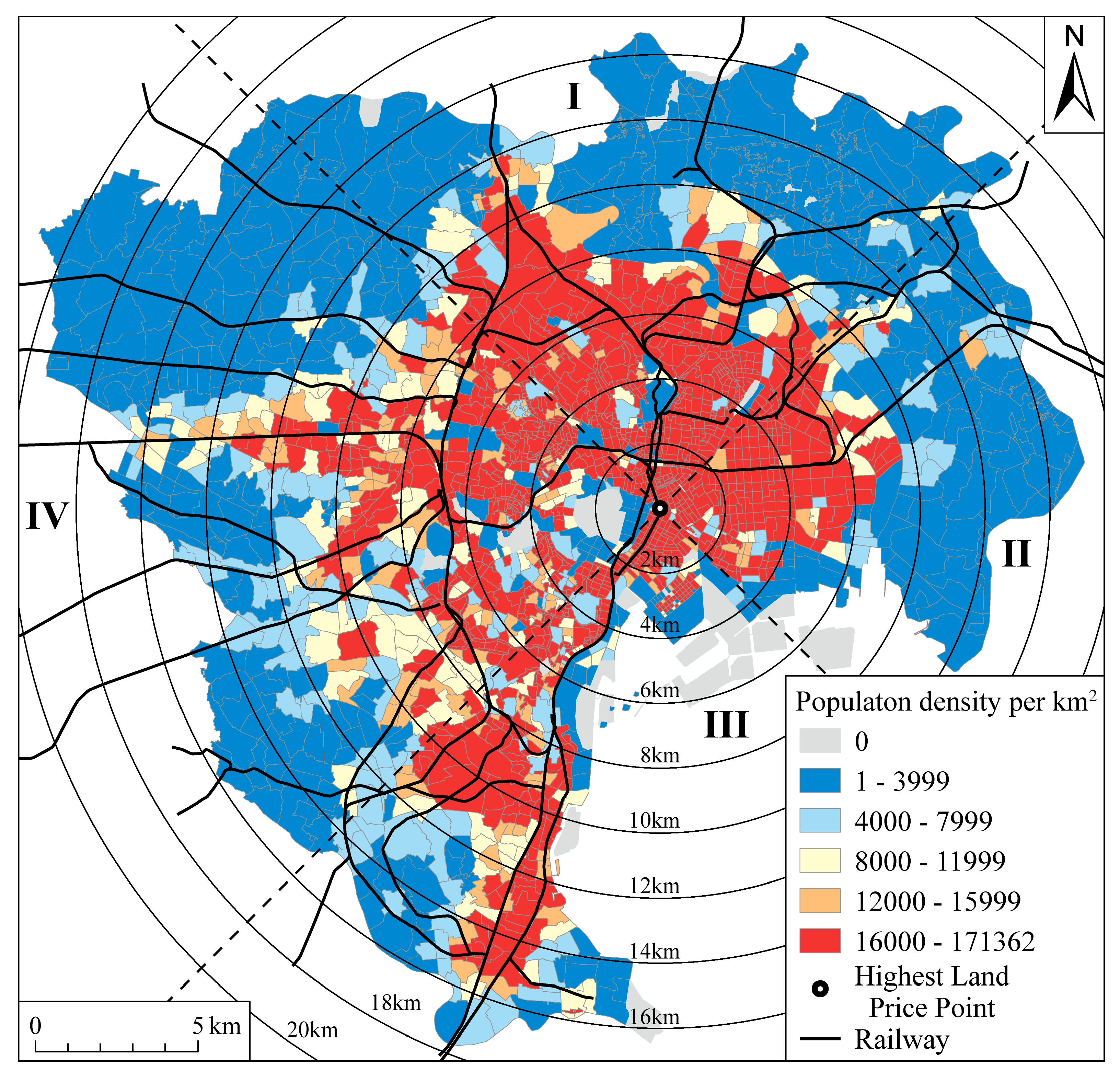
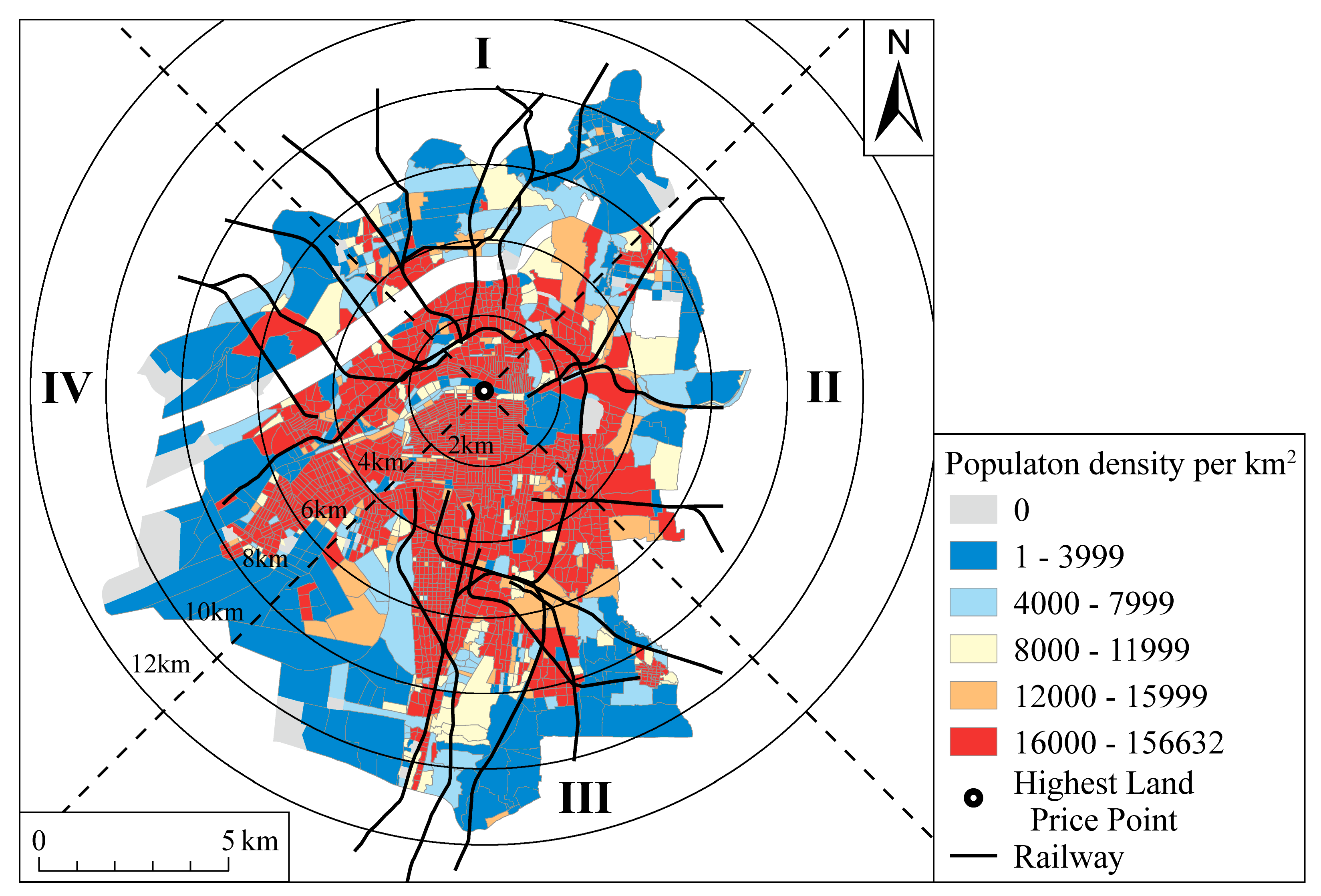


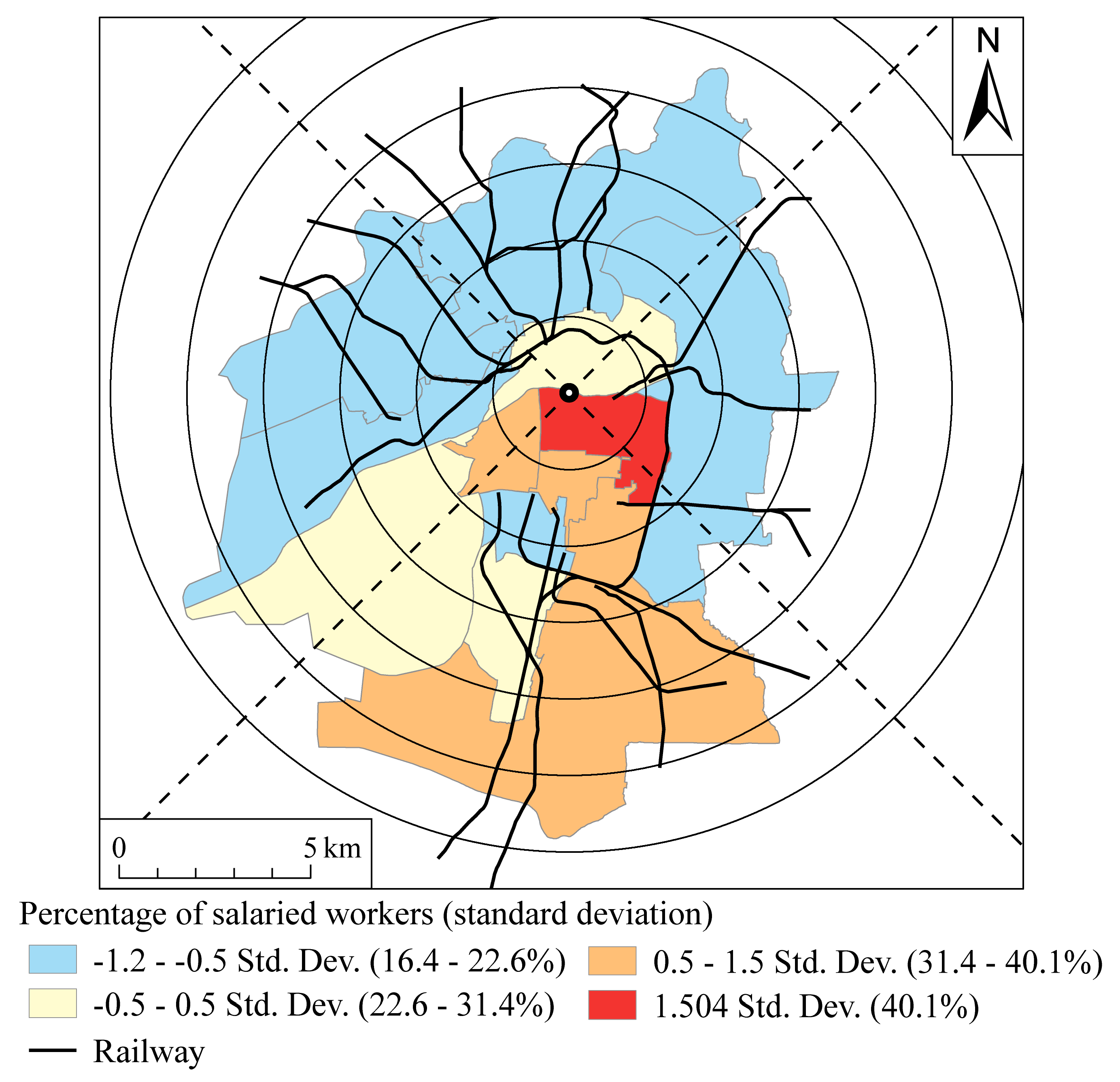
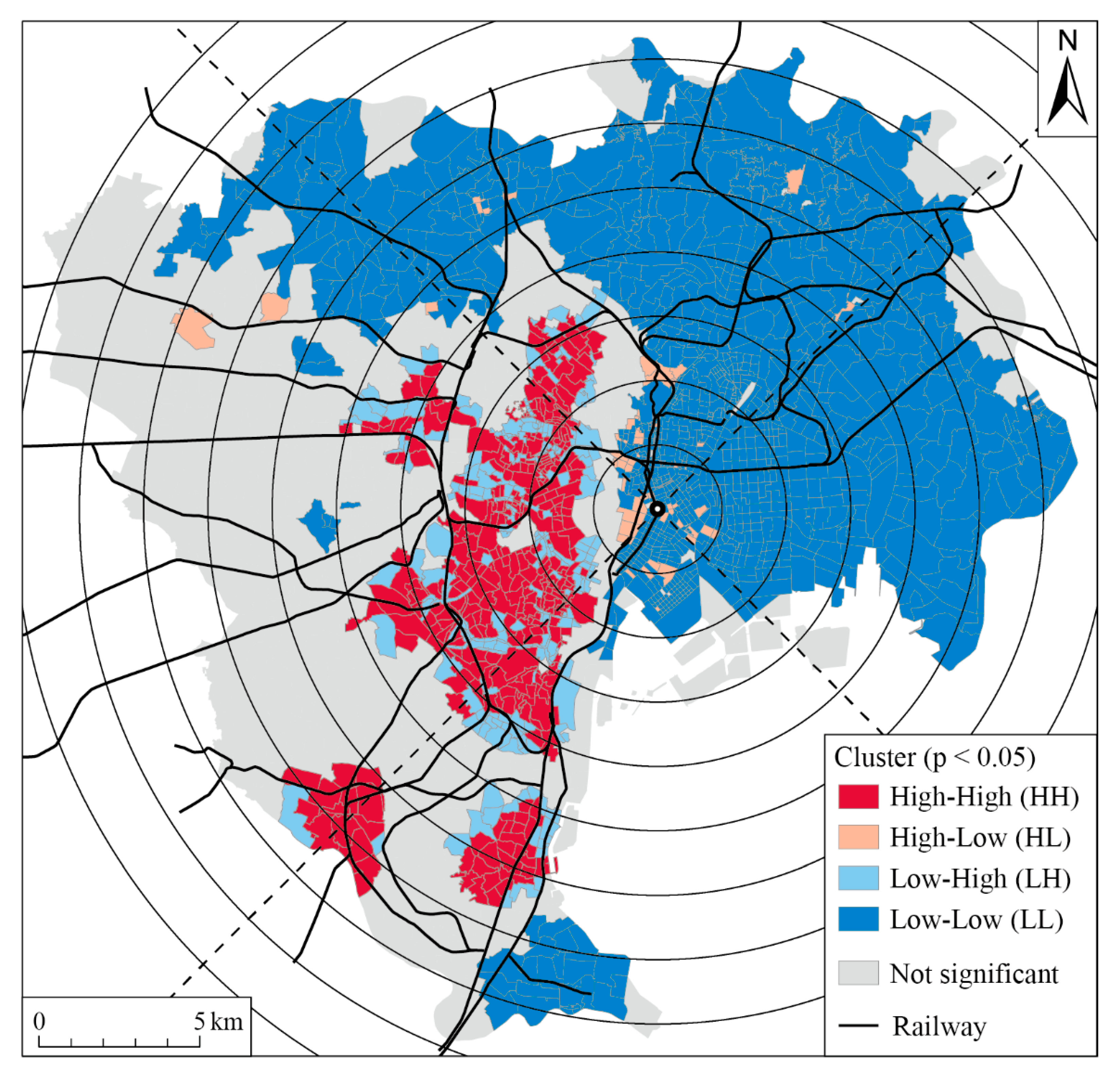
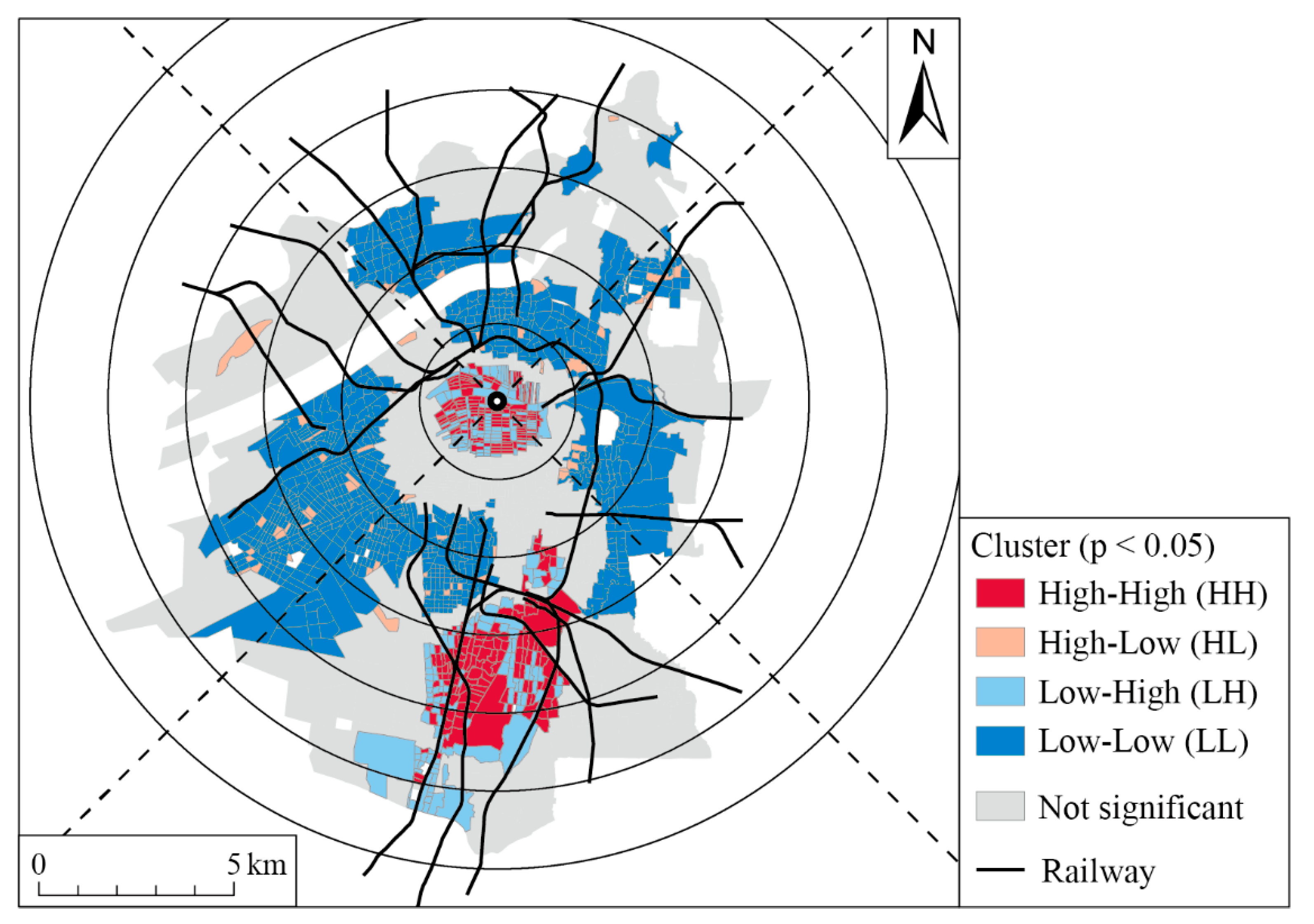
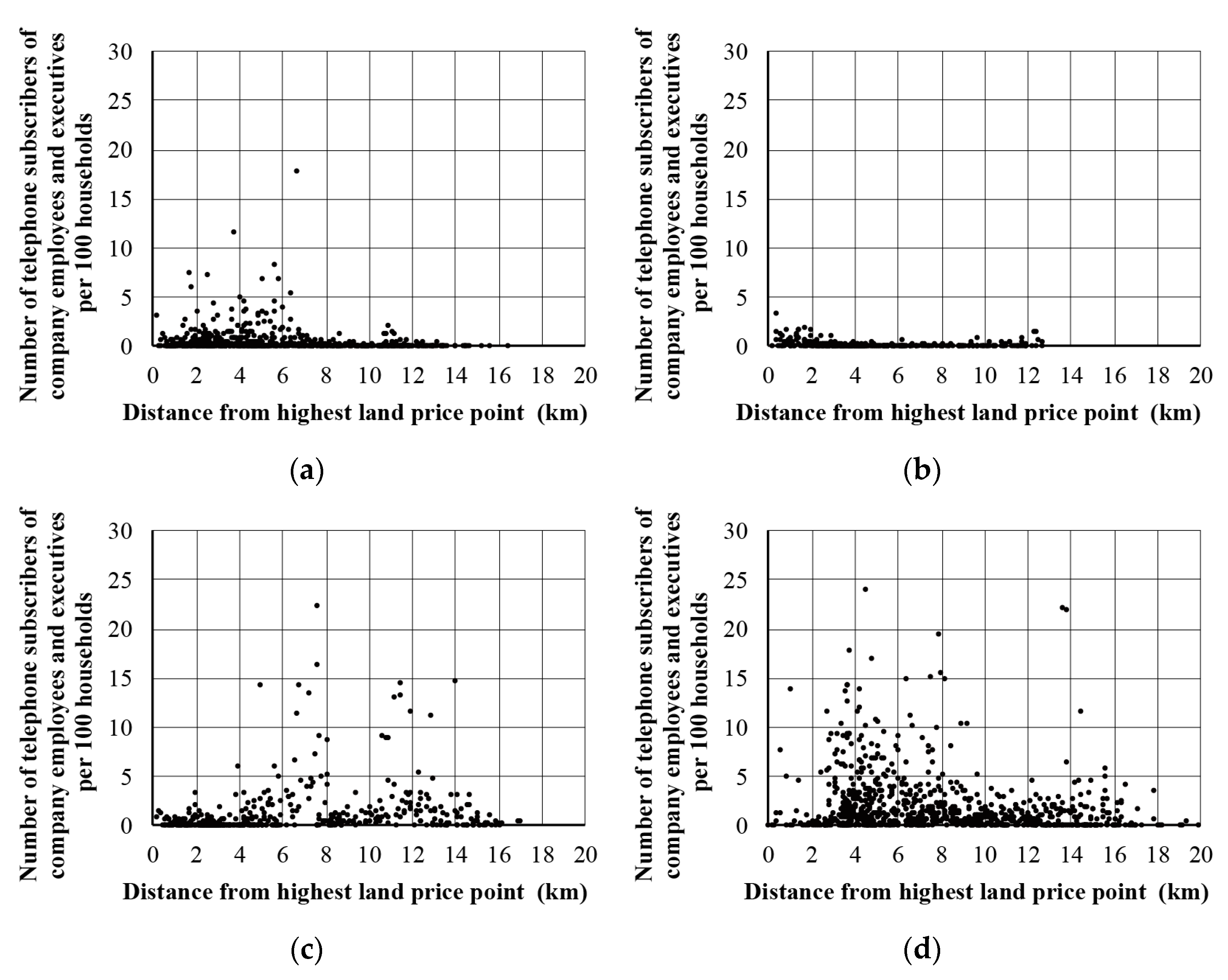
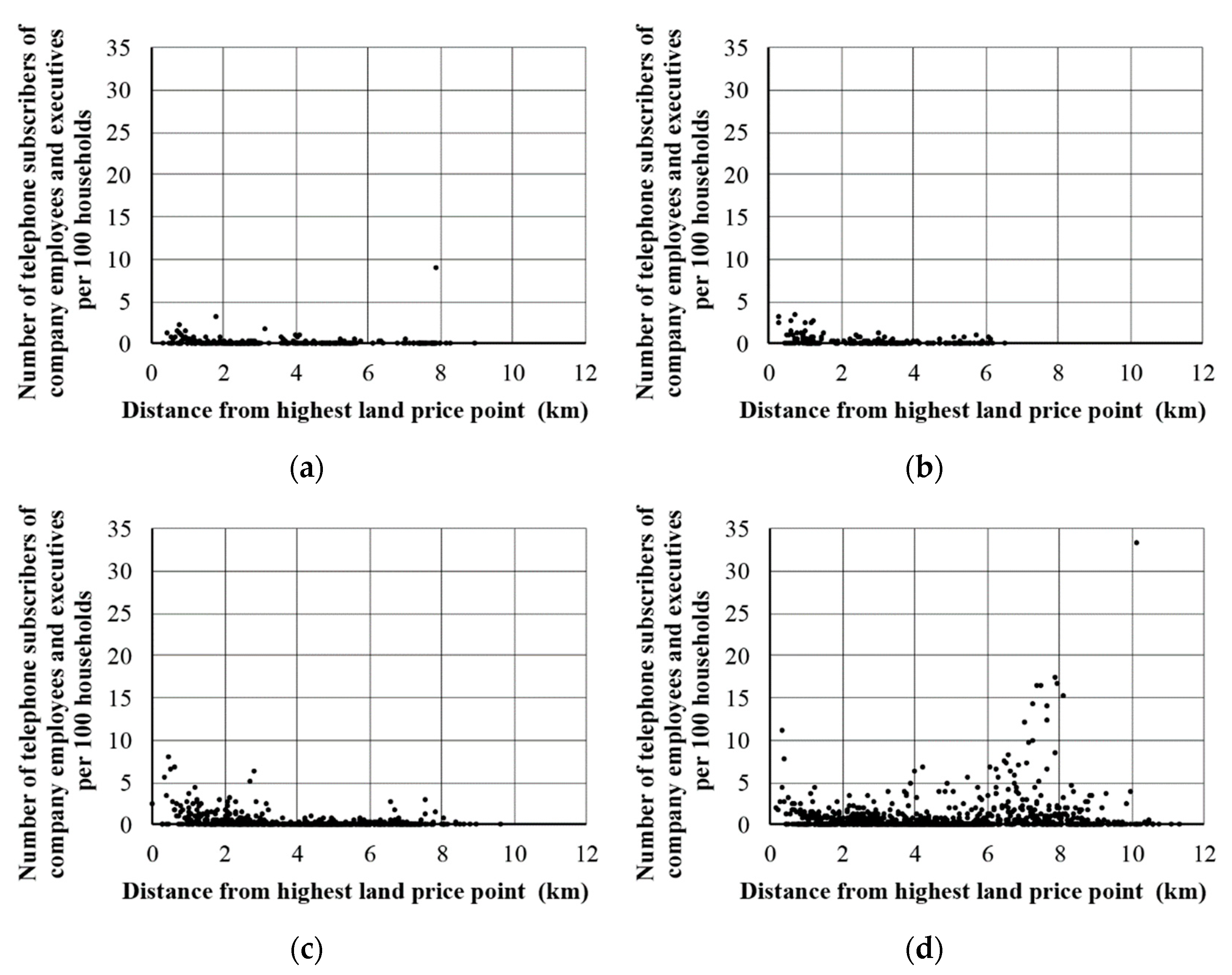
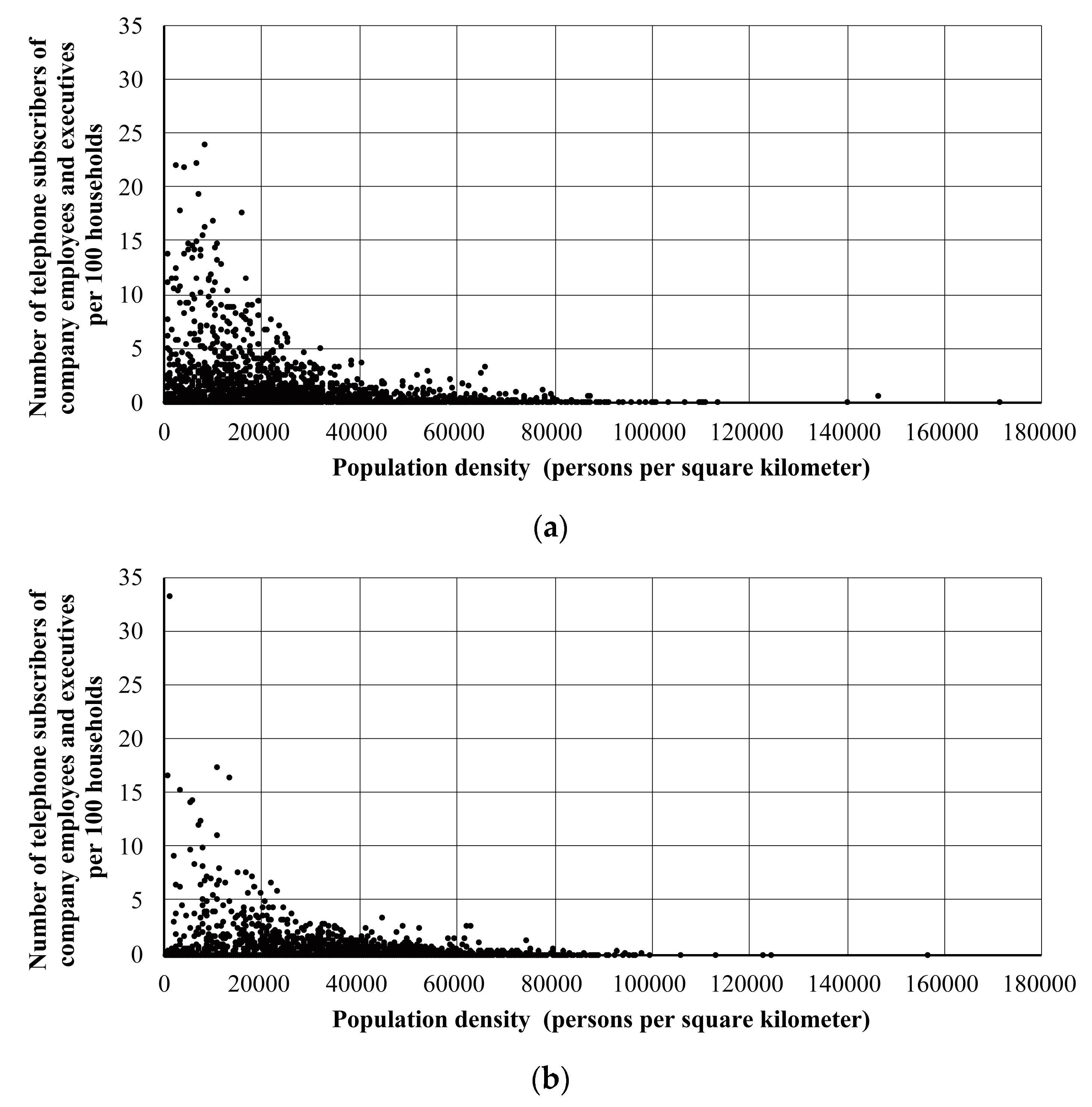
© 2019 by the author. Licensee MDPI, Basel, Switzerland. This article is an open access article distributed under the terms and conditions of the Creative Commons Attribution (CC BY) license (http://creativecommons.org/licenses/by/4.0/).
Share and Cite
Kirimura, T. An Examination of the Distribution of White-Collar Worker Residences in Tokyo and Osaka during the Modernizing Period. ISPRS Int. J. Geo-Inf. 2019, 8, 375. https://doi.org/10.3390/ijgi8090375
Kirimura T. An Examination of the Distribution of White-Collar Worker Residences in Tokyo and Osaka during the Modernizing Period. ISPRS International Journal of Geo-Information. 2019; 8(9):375. https://doi.org/10.3390/ijgi8090375
Chicago/Turabian StyleKirimura, Takashi. 2019. "An Examination of the Distribution of White-Collar Worker Residences in Tokyo and Osaka during the Modernizing Period" ISPRS International Journal of Geo-Information 8, no. 9: 375. https://doi.org/10.3390/ijgi8090375
APA StyleKirimura, T. (2019). An Examination of the Distribution of White-Collar Worker Residences in Tokyo and Osaka during the Modernizing Period. ISPRS International Journal of Geo-Information, 8(9), 375. https://doi.org/10.3390/ijgi8090375





